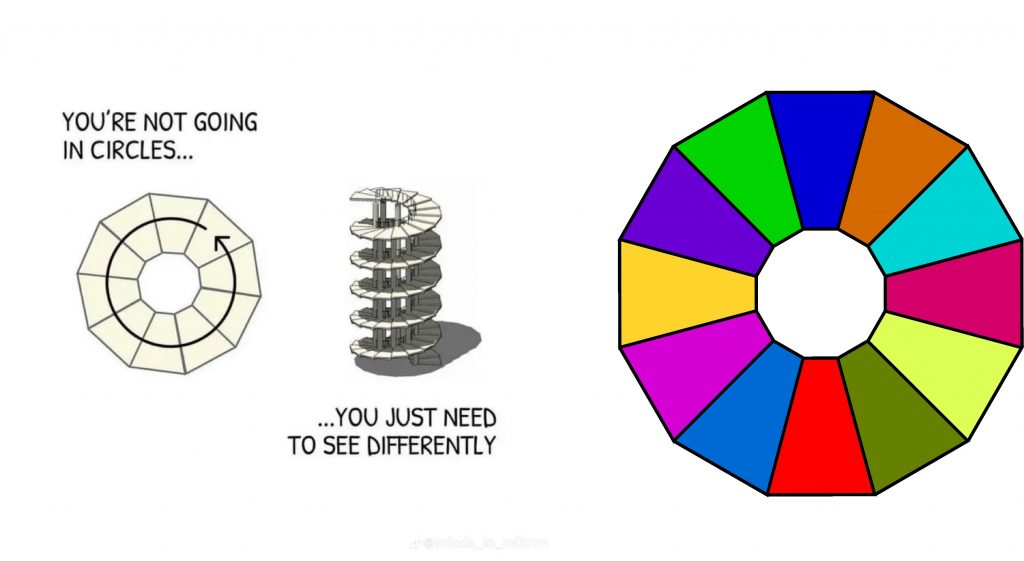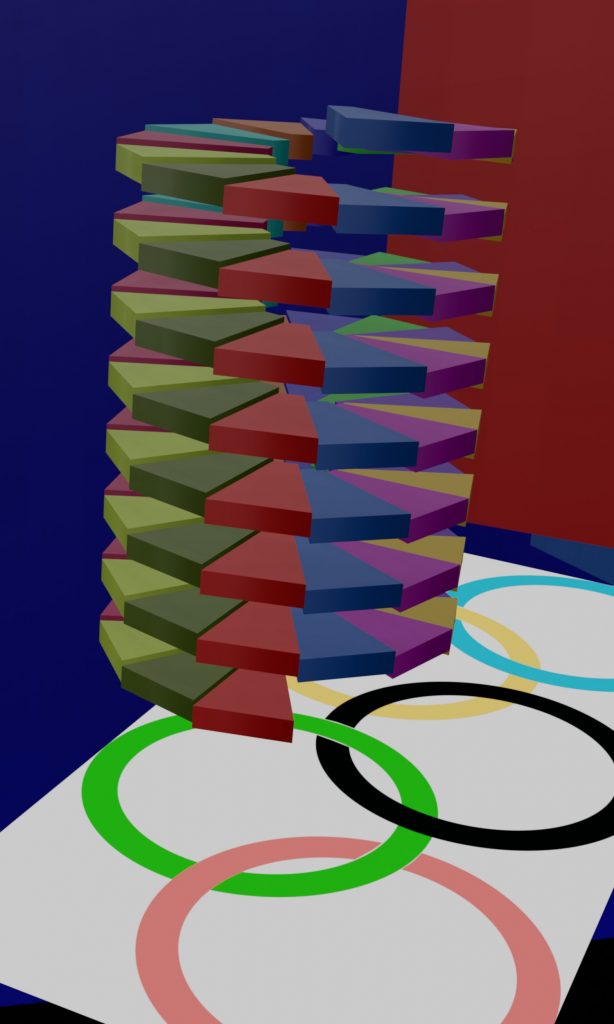I’ve searched for the “hidden secret” to/of music theory, chord-construction, and the selection and arrangement of pitched “notes” for most of my life. I laugh to myself that I have been on a lifelong quest in search of the “Lost Chord.”
Music is used to accompany video more often than vice versa. For more than a decade, I have sought ways to use video to accompany the music I produce —to enhance the likelihood that the audience I seek will be sufficiently immersed to listen to my musical performances.
 Like hour-divisions on a clock, there are 12 chromatic pitches per octave. All of music can be reduced to that —twelve (12) different pitches —one revolution around a traditional “pitch wheel.” Students of music-theory know the “Circle of Fifths,” which is an arranged ordering of a “pitch wheel.”
Like hour-divisions on a clock, there are 12 chromatic pitches per octave. All of music can be reduced to that —twelve (12) different pitches —one revolution around a traditional “pitch wheel.” Students of music-theory know the “Circle of Fifths,” which is an arranged ordering of a “pitch wheel.”
I’m celebrating that with study and practice over an extended period of time, I have learned to use MIDI notes and timing-data to control aspects of my animations. In this case, I am turning ON and OFF the display of the previously-created wedges that I call “pie pieces,” and that represent the twelve (12) distinct notes/tones of a/the “chromatic” (musical) scale.
This project exists at the intersection of my continued experiments to bridge music with its theory and its performance —using visual elements as accompaniment.
One complete revolution around the spiral represents an octave. My spiral instrument represents a set of chromatic pitches that, if you consider the lowest RED, center-most pitch (“pie-wedge“) in the picture to be C1, which is the lowest C on a piano, then pitches ascend to C8, the highest C on a piano and also the highest note on a piano. The spiral’s pitches extend downward to the C#/Db a semitone above what would be C0 on a piano, if that note existed on a piano (it does not).
This is the 1st of something new for me—and, I can’t wait to share what I have in mind. I’ll save additional technical details for later —except, to say that I used Python scripting in the Blender 3D app on MacOS to accomplish the input and processing of a (one of my) MIDI file’s data, saved as “.csv” (comma-separated-values) using Cycling 74’s Max app, and then used the input CSV data to create display-status key-frames for the “pie pieces” in Blender.
The 2024 Paris Olympic Games ended recently. Few of us will become physically skilled as those who competed in Paris in 2024. This bespoke animation is synchronized to my arrangement of the Olympic Fanfare theme-music, and is my tribute to those of us who continue with deliberate effort, working and practicing to perfect our particular skills and crafts.
Practice for OUR Olympics continues —and NEVER ends.

Leave a Reply